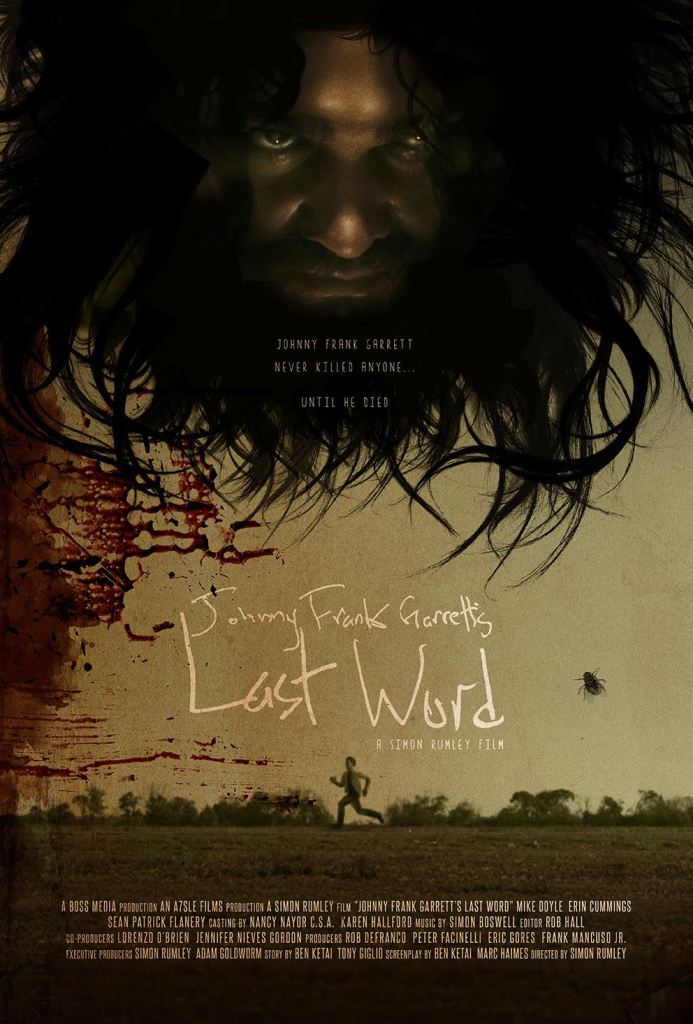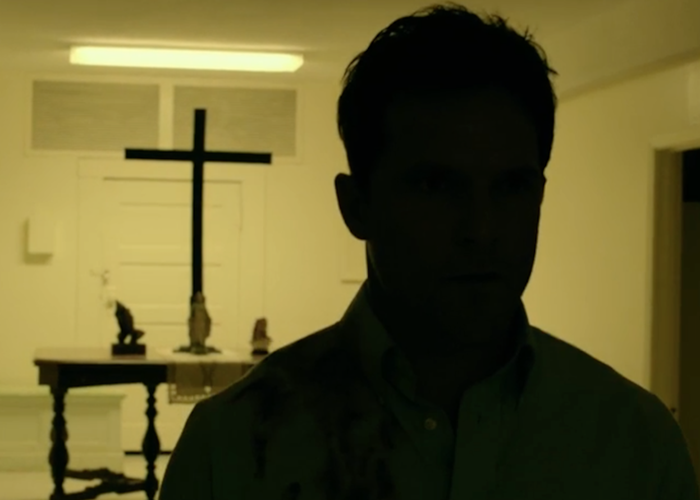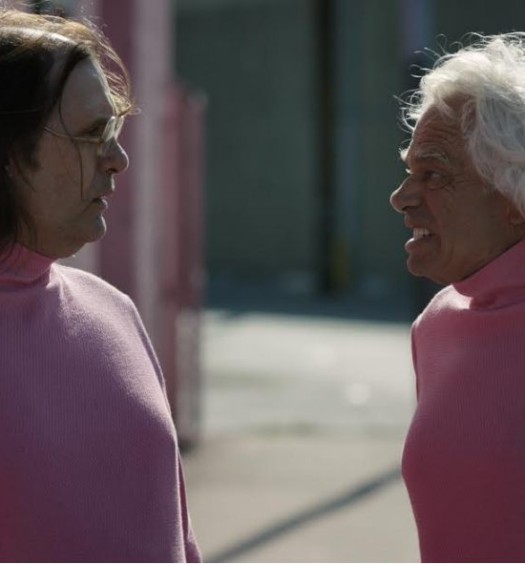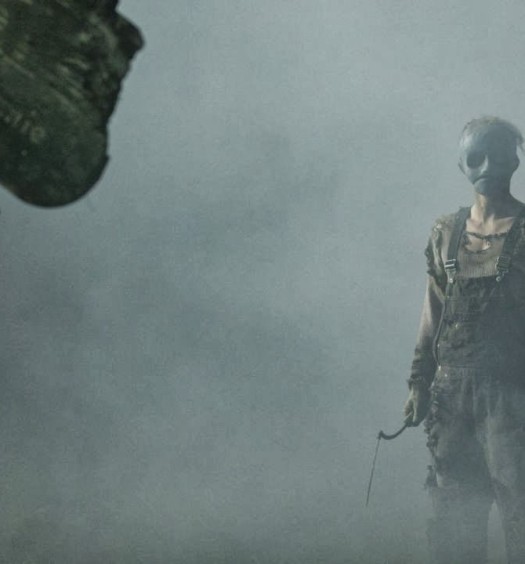Simon Rumley, known for The Living and the Dead and Red White & Blue, premiered his latest genre effort in Austin, Texas for the SXSW Film Festival and Conference. The feature, based on the very real case of Johnny Frank Garrett’s unfair trial and the subsequent effect it had on his home town, bears Rumley’s signature dark vision. It’s a film that will linger with you (review here) particularly because of its true nature.
Rumley isn’t just in town for the premiere, though, as he’s currently preparing to begin filming his next feature, a psychological thriller, in Austin, Texas. Filming is scheduled to begin later this month. Between pre-production and premiere screenings of Johnny Frank Garrett’s Last Word, Modern Horrors caught up with the busy director to discuss the real Johnny Frank Garrett, production, and the current relevance of his film.
You didn’t write the screenplay for Johnny Frank Garrett’s last word. Did you know when you received it that it was based on a true story?
I didn’t, no. I read I think somewhere in the beginning or the ending of the script that it was based on a true story. After I’d read it I thought, “Wow, that’s kind of crazy.” And then I of course did some research, so then I was like, “Wow, that really is crazy.” So, no I didn’t. Hopefully anyone who watches the film will then go and look online and do their own research because it really is stranger than fiction.
It really is. Watching the film, knowing it was true may have been the most fascinating aspect. How did the research that you did shape the production of the film?
Well, the film is set in two different time periods; one is 1981 and one is roughly 1991. Inevitably we tried to get those periods as correct as possible. We were shooting in Shreveport, Louisiana, so one of the big things was just making sure that everything felt as Texan as possible. Given that I’ve been here a reasonable amount of times- I’ve shot Red White & Blue here, I feel I have reasonably good eyes to what’s Texan and what isn’t. So that was one of the bigger challenges, I guess. You know, just going through the neighborhoods and seeing the Texan flags hanging out over houses and the lone star symbols and stuff. I just made sure to get those in the film, and making sure to get a couple Amarillo signs in.
You originally wanted to film in Amarillo, Texas.
We did, but that wasn’t happening. I think Frank, the producer, had asked before I even came on the project and they were just like, “NO.” I asked if we could just do a low key production and was told no. I think in the end it was definitely a good idea not to film there because it’s still a very sensitive topic, of course. Once you have the police saying no, you know you don’t want to mess with that.
It really wasn’t that long ago, so that’s understandable.
No, no, I mean people still remember the case and the family is still alive. Actually the mother and sister are coming to the screening tonight.
That sounds intimidating.
Yeah, I’m a bit nervous I’d say. Especially because it’s a genre film and really concentrates more on the curse than the social injustice. Of course, the social injustice…have you seen the film?
I did, I attended the premiere.
So that was one of the things that really stuck with me, it felt as though it really centered on the moral ambiguity aspect. It instills a lot of questions. Even Redman, who is the moral compass of the story, makes questionable choices.
Exactly. So knowing that this is based on a true story, did you feel a sort of responsibility in handling these characters?
Yeah, very much so. And you know, all of the deaths are actually pretty accurate. A juror really did fall down the stairs, Kathy Jones died in a plane crash, the psychic’s husband died mysteriously in his car. So there were really only two deaths that we fictionalized. District Attorney Danny Hill’s daughter committed suicide when she was fourteen and we were going to put that in the film but everyone thought that it was far too mean. Because again, his family, his wife and think now three daughters are still alive. It’s very much still in the minds of people.
It’s really strange that all of these deaths actually occurred after Johnny Frank Garrett’s execution. Do you believe there might have been an actual curse?
Well, Johnny Frank Garrett did write a curse letter, and I’ve held it in my hands and read it. It’s like 8 pages of increasingly hard, disturbed handwriting. It’s, again, when I first came on board this project, I was in L.A. and I went to Frank Mancuso’s office and they’d just received letters by Johnny Frank Garrett’s to his sisters from prison. So I literally spent a day and a half reading through letters, trying to get to know him a bit and his mentality. It’s weird because in the film there’s a thing about him having an IQ of 70, which was very much played up in the actual case. They were calling him retard but again, reading those letters, he didn’t seem abnormally slow. Even the spelling wasn’t bad. It felt almost a sanguine mind. I think there’s been a lot of misinformation that inevitably sticks. There’s a lot of misinformation online, which is a shame really.
There are some similarities in the case to Making a Murderer, which didn’t come out all that long ago on Netflix. How does it feel, the relevance of the similar messages?
Of course, completely by chance. But yeah, it seems to be very much in the zeitgeist. And before I’d read the script I’d watched The West of Memphis, and again a very similar story about kids arrested for murder. They maintain their innocence and over the years, bit by bit, it became increasingly obvious that the evidence given had been completely made up or were false testimonies. How can this happen? So it’s wrong that this stuff continues to happen because the law is there to protect the weak and the innocent. Fair trial, and that kind of stuff. But more often than not it doesn’t seem to. We touch on that a little bit in the film. Maybe not as much as I’d like to. Hopefully by the end of the film that message comes across, though. Even if no one can say 100% for sure that, at this point, if Garrett was innocent or not, it’s very easy to say that the trial was a mockery of any kind of criminal justice system.
I was inspired to do a little research myself after seeing the film and I couldn’t help but notice the actor portraying Garrett, Devin Bonnee, does share a close resemblance to Garrett. Was that why he was cast?
Yes. Getting someone to look like Garrett was always a concern. We didn’t have tons of time to do tons of makeup and completely transform someone. So our casting director, Karen Haffford, who I’ve worked with on Red White & Blue, she said there was one guy she thought I should see. It was Devin. I met him and he came in really shy, and I thought, “This guy is great,” so basically I gave him the part there and then. We’re not going to get any better than him. I thought that was him being him, and then Karen said, “Why don’t you meet him properly?” After I’d given him the role. Then he came out just like a normal human being, bright and smiling, that kind of stuff. It was amazing, because he so looks like Johnny Frank Garrett in some of the pictures. And actually once the photos went live, one of Garrett’s sisters said, “Oh My God, I nearly had a heart attack. I saw the pictures and he looks just like my brother.” So that was an uncanny coincidence. Karen did a great job finding this guy.
In the film, Garrett was more of an intense presence, you don’t see much, he’s just kind of an unseen boogeyman looming over the story.
We had different conceits on how to do it, whether it was more like Sinister, where things are more like in the dark corner of the background type thing, or like Insidious, where everything is right in front of your face. I think in the end everyone felt that less is more, really. For me, making his presence felt was more the music in a way. Like the low pitched cello, that for me really set the mood. Even though Johnny isn’t there and you can’t see him, you feel he’s there somewhere.
You do, it’s effective. It’s a movie that sticks with you; you keep thinking about the true aspect, long after. Thank you so much for your time.

































